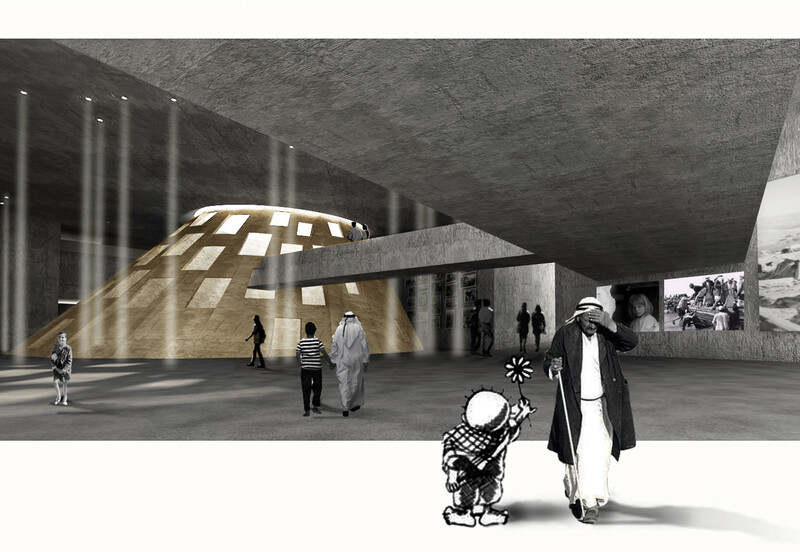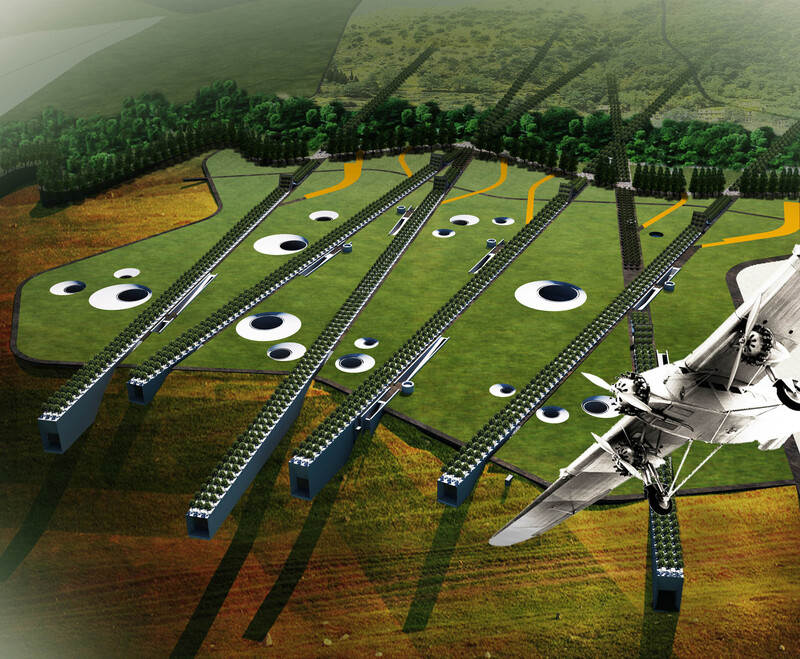The Electronic Intifada Edinburgh 10 October 2013

Omar Mohammad imagines a Nakba museum where Palestinian refugees’ voices can be heard.
As he prepared for the opening of his exhibition Al-Nakba Memorial: Palestinian Memories of Displacement, architect Omar Mohammad had to ask for extra room from the University of Edinburgh. The walls were filled up with two-dimensional representations of his vision of a vast monument, while all available table space was covered by scale models depicting buildings and landscapes.
For Mohammad, this is far from a theoretical project. The son of refugees from the village of Jahula in the Galilee region of historic Palestine, he grew up in Damascus.
“We still have the deeds of their home, the papers and documents, they even have their own keys,” he said. “I have a kind of nostalgic memory about my parents telling me about Palestine, how they fled to Syria and to Damascus and we lived there since then.”
These origins have clearly influenced Mohammad’s academic and architectural work. His doctoral research at Edinburgh has focused on the idea of the “anti-memorial” or “counter-monument,” what he refers to as a “memorial with flexibility, with evolvement, with change” — a means of remembering the past which also recognizes its shifting political and social meanings and the changing ways in which people relate to their history.
The physical embodiment of Mohammad’s ideas, though, has developed into his ambitious architectural vision for a “Nakba memorial” — to honor those killed and uprooted in the ethnic cleansing ahead of Israel’s foundation in 1948. His blueprint for the memorial was unveiled in a public exhibition in Edinburgh this week.
The plans encompass a memorial park situated on the side of a wadi or valley in southwestern Syria, overlooking the occupied Golan Heights and Palestine. Crossing the parkland and culminating in viewing points looking out towards Palestine are six broad pathways lined with olive trees, the “avenues of displacement.”
Mohammad sees these avenues as representing the routes which Palestinian refugees took from their homes to six places — Lebanon, Syria, Jordan, Egypt, across the Mediterranean Sea and to points within Palestine.
Lifting of land
Both physically and historically, these routes of displacement begin with a “memorial of expulsion.” In this grand scheme, part of the land’s surface would be literally lifted up on the anniversary of the Nakba each year.
“With each lifting of the land, there is also a sensory experience of sound, of light, all that action around moving that piece of land up, symbolizing the idea of the Nakba, the destruction of the land, the displacement of the refugees,” Mohammad said. “For me, this is the main idea of the project.”
Below the ground the plans envision a grand museum space, built in chambers aligned along the six avenues. “I started with the Palestinian map and worked with a kind of ironic representation of destruction, so I divided the map into six regions and started trying to rotate these regions around six routes of displacement,” Mohammad said. The spaces of the underground museum would each be shaped like one region of the Palestinian map.
“I replaced these regions along these six routes directed to Palestinian lands,” Mohammad added. Far from simply memorializing the past, for him these avenues are two-way streets, symbolizing both the flights of the Palestinian refugees from their homes, but also the routes that they will take back to return to the land. And in returning, the fragmented pieces of Mohammad’s map of Palestine would themselves be restored to their rightful order.

The envisioned underground museum chambers are built along six avenues representing the six routes of Palestinian displacement.
This subterranean space would be dominated by great cones rising up to the surface of the land and open to the sky. Within them, he wants to hear the voices of Palestinian refugees recorded for oral history projects, telling their individual stories to the world.
For Mohammad, thinking of his parents’ stories, these hugely ambitious plans evoke “the transactional relationship between the refugees and their homeland, or Palestinians generally and their homeland. That kind of tightness between the land as a place for living, for refuge, for harvesting, all those ideas, and the emotion of connection with the land, and the people themselves.”
Embedding the space of the museum in the ground is also “about symbolizing the tightness between the refugees and their homeland, so everything is embedded in the land, that strong connection with the land.”
“Theater of action”
In addition to the obvious care and attention which has gone into the architectural planning of the memorial, equal thought has apparently gone into its meaning. Mohammad is sensitive to the danger that to create a monument to something is to place it in the past, to declare it to be a historical event, over and done with. As he is abundantly aware with his parents still in Syria, the Nakba is very much an ongoing catastrophe for Palestinian refugees.
“What I did here is just create an environment, an empty space for participants to intervene, to put their own stuff in the space,” said Mohammad. The museum as he envisages it is not “the traditional way of presenting something antique” but a space where people — particularly Palestinian refugees — can come to make their voices heard and to preserve their memories and objects.
“There is still very valuable stuff hidden,” he said. “I think we need to raise awareness of this, to uncover these types of materials in a way that is not fixed, as a process, moving all the time … I make that fixed container only a container for other thoughts and narratives to fill in. I want it to be a theater for action, not a traditional museum.”
Mohammad is also alive to the “very strange feeling” of pouring time and effort into planning a project which, in all likelihood, will never be built. “On one level I know this project is really theoretical,” he said.
On the other hand, Mohammad’s hopes are that his initiative will “create a new kind of design vocabulary … of concepts and ideas and symbolism,” which can inform how the issue of Palestinian refugees is thought about and represented.
“With everything that is happening in the Middle East now, in Syria, these things will become more complicated in real life,” he said. “The good things about memorials is that they are connected with all aspects of life — politics, social aspects, cultural, religious.”
It makes sense, therefore, that in the Edinburgh exhibition Mohammad’s work is twinned with Ettizan Ghuzlan’s Damascene Memories, a series of photographs taken before the artist fled Syria. “It’s to do with remote memories of Damascus, expressing the remote memories of a place through photography and architecture,” said Mohammad.
And, as he emphasized, “the Palestinian and Syrian issues, they are in one line, one issue.”
It makes sense on yet another level for his plans for the Nakba memorial to be located on Syrian soil. And as a Palestinian refugee raised in Syria, he insists that “you cannot separate one from another, particularly with all the uprisings in the area. It’s not only Palestinian refugees who are suffering at the moment, unfortunately, there are many other refugees now too.”
The exhibition Al-Nakba Memorial: Palestinian Memories of Displacement is taking place at Tent Gallery, Evolution House, Edinburgh College of Art until 14 October.
Sarah Irving is a freelance writer. She worked with the International Solidarity Movement in the occupied West Bank in 2001-02 and with Olive Co-op, promoting fair trade Palestinian products and solidarity visits, in 2004-06. She is the author of a biography of Leila Khaled and of the Bradt Guide to Palestine and co-author, with Sharyn Lock, of Gaza: Beneath the Bombs.





